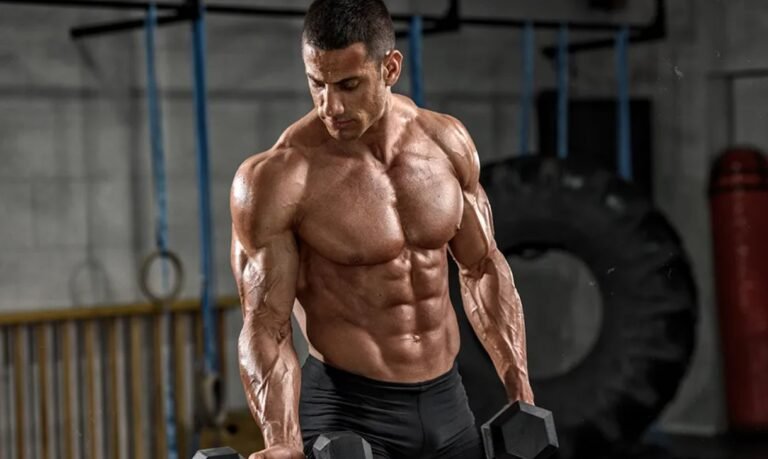How Do You Know If You Have a Good Physique?
A good physique typically reflects balanced proportions and muscle definition. Visible physical fitness and a sense of well-being often indicate it.
Determining whether you have a good physique involves considering factors such as body composition, muscular symmetry, and overall physical health. These elements serve as markers of fitness and aesthetic appeal.
A good physique often resonates with confidence and is usually the result of regular exercise, a balanced diet, and effective stress management.
It’s not solely about appearance; strength, flexibility, and endurance are also critical components of a well-maintained body. Recognizing a good physique goes beyond scale weight and includes measurable factors like body fat percentage and muscle mass.
Embracing a lifestyle that promotes wellness and physical activity is often visible through one’s physique, and this positive image is typically associated with vitality and optimal functionality of the body.
Perception Of A Good Physique
The idea of a good physique varies worldwide. Different cultures prize unique bodily attributes. Some may value muscular builds, while others prefer slender forms. A person’s surroundings strongly influence their fitness goals.
Feeling confident and happy with one’s body often reflects a good physique. This sense of personal satisfaction matters more than public opinion. Many aim for a body that brings them personal joy rather than chasing popular standards.
Body Composition Metrics
Evaluating your physique involves several metrics. Body Mass Index (BMI) is a popular method. It compares your weight to your height. Looking at BMI can help you understand if you’re in a healthy range. Yet, it may miss body composition details.
Body Fat Percentage gives deeper insights. It tells you how much of your body is fat. It’s crucial for assessing fitness. A low body fat percentage often signifies good health and fitness.
Your Muscle Mass is also key. High muscle mass usually means more strength and better metabolism. Understanding these metrics can guide you towards a healthier physique.
Functional Fitness Indicators
Understanding your body’s strength is key to gauging a good physique. Specific benchmarks, such as the ability to lift a proportion of your body weight, point to solid muscle composition. Bench press, squats, and deadlifts serve as yardsticks for evaluating strength.
- A strong physique endures long activities, like running or swimming.
- Endurance reflects in lesser fatigue during sustained efforts.
Flexibility contributes to an overall good physique. It allows for a full range of motion. Simple tests like touching toes or stretching arms indicate limberness of muscles.
Maintaining balance proves core stability. Good balance means holding a one-leg stance effortlessly. Tests should show proficiency in both static and dynamic balance.
Health Markers
Knowing your health markers is vital to understanding if you have a good physique. Blood pressure should be within a healthy range; typically, this is 120/80 mmHg for an adult. Resting heart rate also offers clues about your fitness. A normal range is 60-100 beats per minute. Finally, keeping cholesterol levels in check is crucial. Aim for a total cholesterol under 200 mg/dL, with LDL (“bad” cholesterol) lower than 100 mg/dL and HDL (“good” cholesterol) above 40 mg/dL for men and 50 mg/dL for women.
Physical Appearance Attributes
Having a good physique often means balance in body shape and size. Symmetry and proportion play big roles. Both sides of your body should mirror each other. Equal arm and leg shapes are signs. Good body ratios also matter. Perfect proportion means your upper and lower body match. They should be in harmony.
Your skin’s health reflects overall wellness. Bright, clear, and smooth skin often means you’re healthy. Dark patches, pimples, or excessive dryness might need attention. Moisturization and protection from the sun are key for great skin.
A strong posture is a pillar of a good physique. Stand tall and straight. Your shoulders should be back, not slouched. Correct posture makes you look confident. It can also prevent body pains. Daily exercise helps in maintaining a healthy posture.

Credit: www.mensxp.com
Comparing To Fitness Standards
Sports Performance Benchmarks are key to measuring a strong physique. Track your progress against set standards. For example, a good mile run time can indicate cardiovascular health. League athletes’ stats help set these gold marks. Use them to gauge personal fitness.
Look to the Fitness Industry Guidelines for a balanced view. These suggest ideal body fat percentages and strength levels. Men should aim for 18-24% body fat, while women strive for 25-31%. Complete a bench press with weights aligned to your body weight. This is a sign of robust upper body strength. Fitness tests and evaluation charts are available. Use them as your fitness map.
Personal Goals And Progress
Assessing personal goals is crucial for a good physique. Break big goals into small, achievable steps. This makes progress easier to track. Ensure that these targets relate well to one’s own body, and avoid comparing with others. It’s a personal journey.
Consistent training is the backbone of muscle growth and fitness. Daily routines need not be lengthy. Short, regular exercise sessions are better than occasional hard workouts. This consistency helps in building a better physique steadily over time.
Good eating habits are foundational for a healthy body. It is important to consume balanced meals. A good diet includes proteins, vegetables, fruits, and whole grains. Sugary snacks and processed foods should be limited. Eating right brings notable changes to one’s physique.
Frequently Asked Questions
What Defines A Good Physique?
A good physique is typically characterized by a balanced body composition with healthy muscle tone and low body fat. Aesthetic proportions, strength, flexibility, and overall body health contribute to its definition.
How To Measure Body Physique Accurately?
Measuring body physique accurately involves calculating body mass index (BMI), body fat percentage, and muscle mass. Tape measurements and visual assessments can also provide insights into physique.
Can Everyone Achieve An Ideal Body Shape?
Yes, with a combination of tailored exercises, nutrition, and consistent effort, most people can work towards achieving their version of an ideal body shape. However, genetics play a role in individual body types.
Are Abs A Sign Of A Good Physique?
Abs are one sign of a good physique, indicating low body fat and strong core muscles. However, overall body composition and physical fitness are also key indicators.
Conclusion
Assessing your physique goes beyond sheer aesthetics. It’s about health, confidence, and self-awareness. By measuring, comparing, and reflecting, you ensure your body’s well-being. Remember, a balanced lifestyle fosters the best physical outcomes. Stay informed, stay fit, and celebrate every improvement on your fitness journey.







